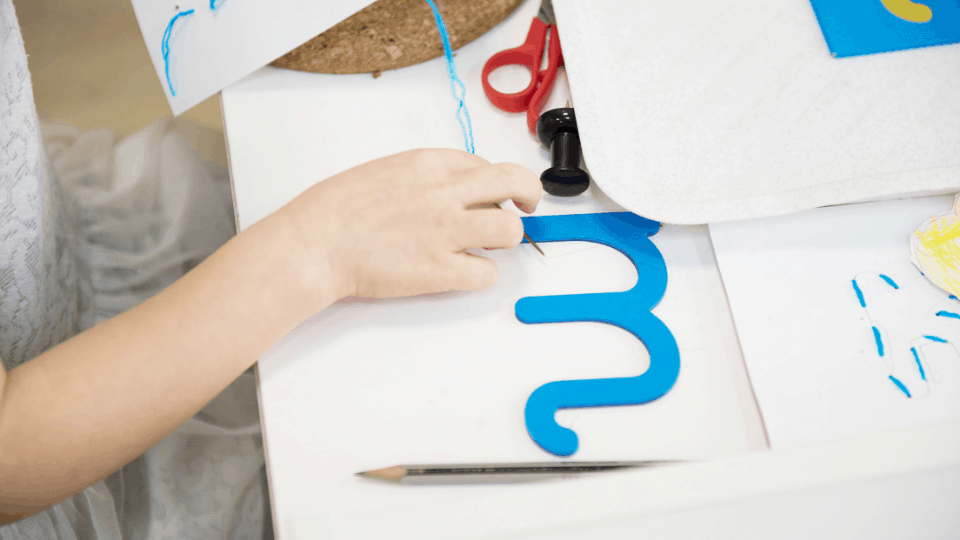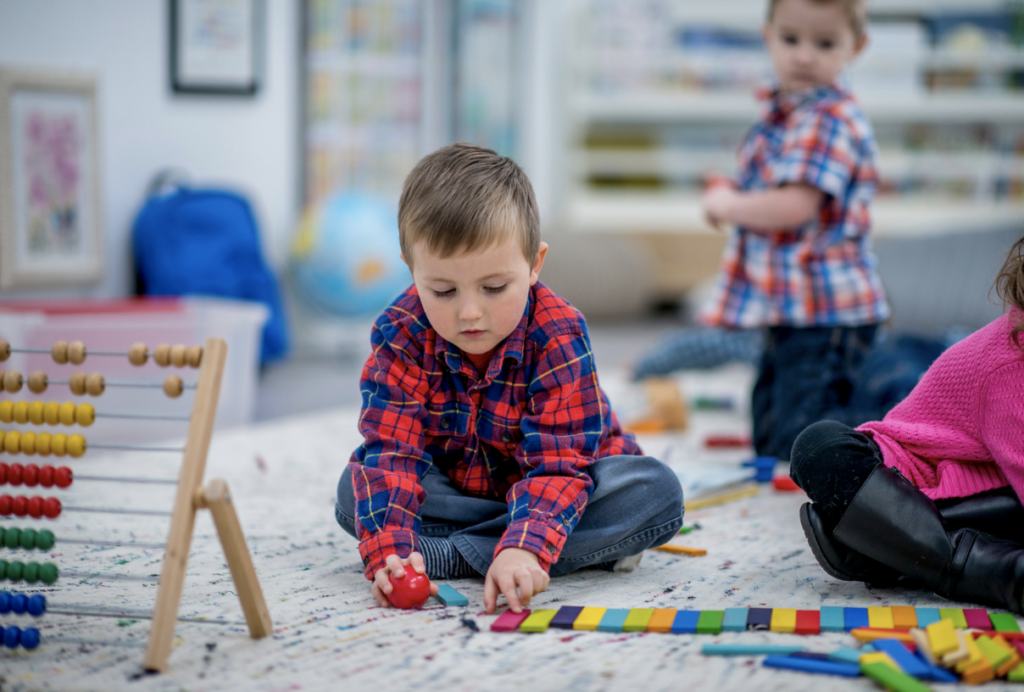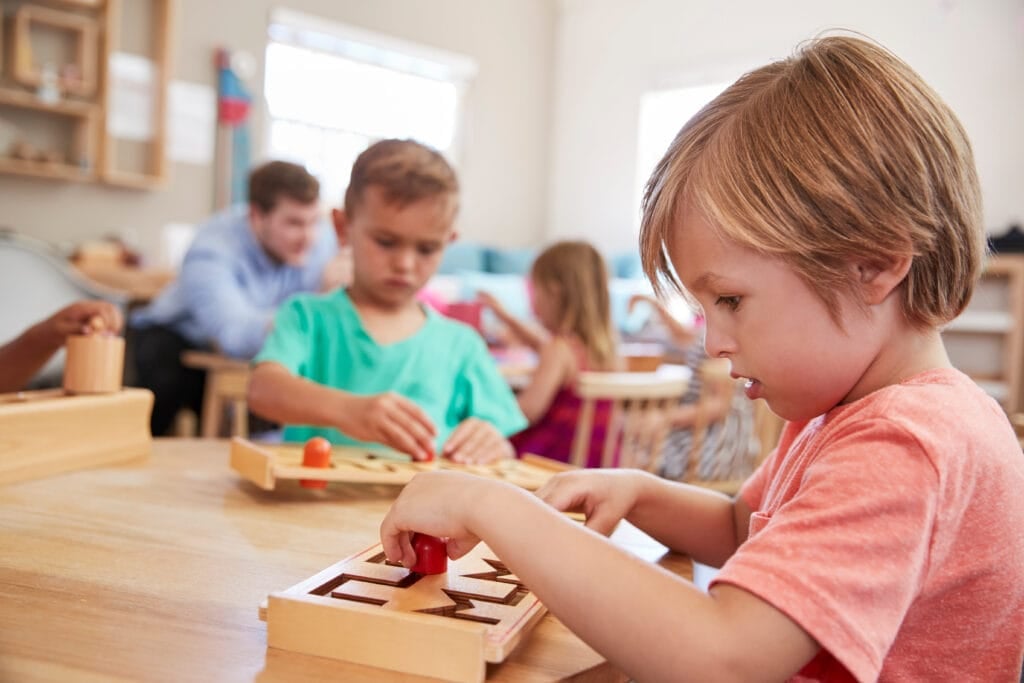In the
Montessori shelf work is a hands-on toy or activity laid out on the shelves for the child to work with. The activities are designed to stimulate the child’s mind, encourage exploration, and inspire independent learning.
Montessori activities are self-motivated. The child is encouraged to follow their interests, choose their activity, and gradually progress at their own pace. The shelf work is child-sized for independent handling.
Read on to learn more about what should be on the
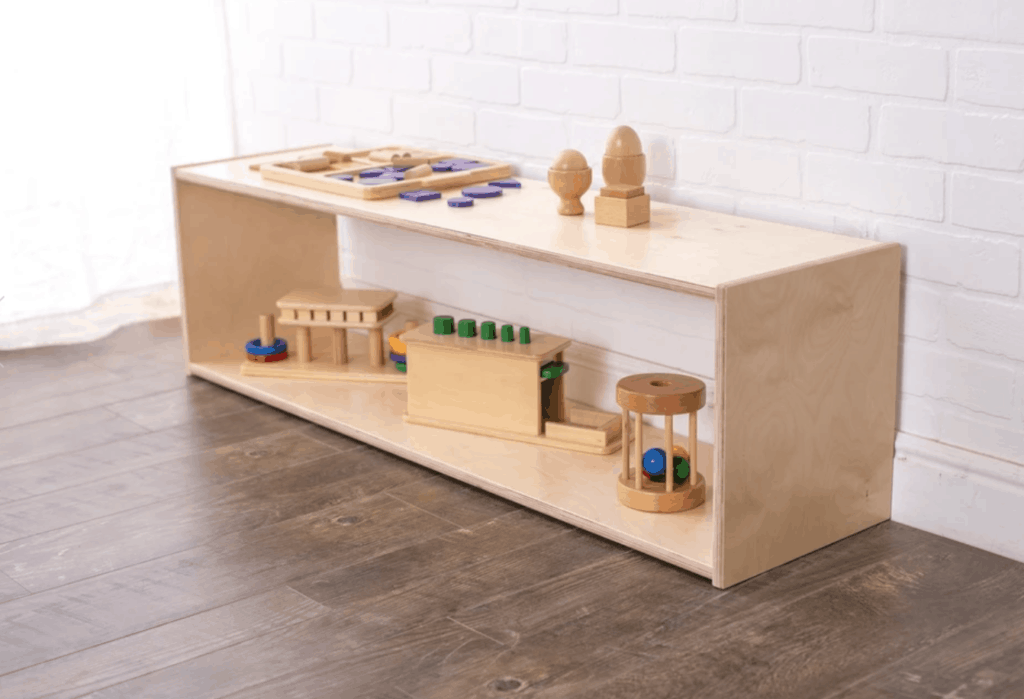
Montessori for Today picks out furniture, educational tools, toys and lifestyle items that we think are the best and most exciting, based on independent research and careful consideration. On some occasions we earn revenue (at no additional cost to you) if you click the links and buy the products. But this doesn’t affect what we choose to highlight and we will never let it bias our coverage.
What should be on the Montessori shelves
Montessori shelf work is tailored to children’s age, interests, and developmental needs. When you set out to implement Montessori at home, it can be pretty intimidating and confusing but don’t worry; we will give you tips to guide your choice of toys and activities.
Offer your child a variety of activities, ideally targeting different ranges of skills. Toddlers and younger children can have a little bit of each curriculum area on the shelf. You can rotate it when they have mastered the activities.
Here are some of our favorite
- Practical life activities; zip dressing frame, large button dressing frame, sorting tray, wooden lacing set,
Montessori cooking together set. - Science and Cultural activities: realistic animal puzzles, animal matching set, floating and sinking exercises, puzzle map of the world, care of plant set.
- Language activities; naming familiar pictures, sand tray, sandpaper letters, large movable alphabet, picture books.
- Mathematics activities: counters, number cards, sorting, and stacking toys.
- Sensorial activities: coin box, shape puzzle, ring pegs, wooden shape sorter. pink tower, knobbed cylinders.
- Music; tambourine, nesting xylophone set, hand shaker, drum.
- Open-ended activities; wooden rainbow stacker, jigsaw puzzle, and wood lacing set.
Dr. Maria Montessori realized that children learn best through hands-on activities. The
Now that you have read about the activities that should be on the
How to Present Montessori Shelf Work
Presenting the
Materials are displayed on the shelf for the child to notice and choose to work with it, while some activities are sequenced and need introductory lessons, such as the pink tower material. The child is shown how to grade the tower from the biggest to the smallest.
Here are the steps on how to present the shelf work.
- Always begin by inviting the child to work with the material. You can ask ”would you like to work with me?” or I have an exciting material to show, would you like to see it?
- If your child affirms ‘yes’ to your invitation, proceed to the next step.
- Take the child to the shelf, show him the activity, and name it. “This is a pink tower.”
- Invite the child how to choose a workspace and lay the table or floor mat depending on the activity.
- Show the child how to carry the material to the chosen workspace. The workspace might be on a table or the floor.
- Sit next to the child, wherever the child has the fullest view
- Carefully and slowly demonstrate the activity.
- Then, encourage the child to take a turn
- Show the child how to return the material to the shelf.
After giving the child an introductory lesson, please encourage them to explore the activity on their own to attain deep learning and understanding.
How to organize Montessori shelves
When arranging the toys or activities that your child plays with, you don’t lay out all the materials at once because It makes the
Here are some tips on how to arrange the
- The toys or activities on the
Montessori shelves should be beautifully displayed and attractive so that the child can look over and engage with the activities.
- Display about 6 to 8 activities from each curriculum area so the shelf won’t look cluttered.
- Every activity on the shelf should have a clear designated place where the child can easily access it at an eye level. Whatever shelf system you are using should be low enough for your child to access it.
- Create enough space in between the toys on the shelves. Place one toy or activity in each cubicle for cubicle shelves with dividers. Proper spacing allows the child to concentrate on one action at a time.
- Arrange the activities on the shelves in a ‘to do’ fashion. For instance, you don’t want to place an already completed puzzle on the rack. It is more inviting and fun for the child to pick up an activity and complete it.
- Display the toys inside a tray or basket with multiple pieces like puzzles. It is much more organized, and the parts don’t get missing.
- Montessori bookshelves: display your child’s books on a front-facing bookshelf where they can see the attractive and colorful book cover instead of the rim.
As part of the care for the environment, organizing the shelves makes cleaning up a lot easier for the child because the child already knows the appropriate shelf for each toy. Lay them out aesthetically pleasing to the child. Children crave order, making it easier to engage in the activities.
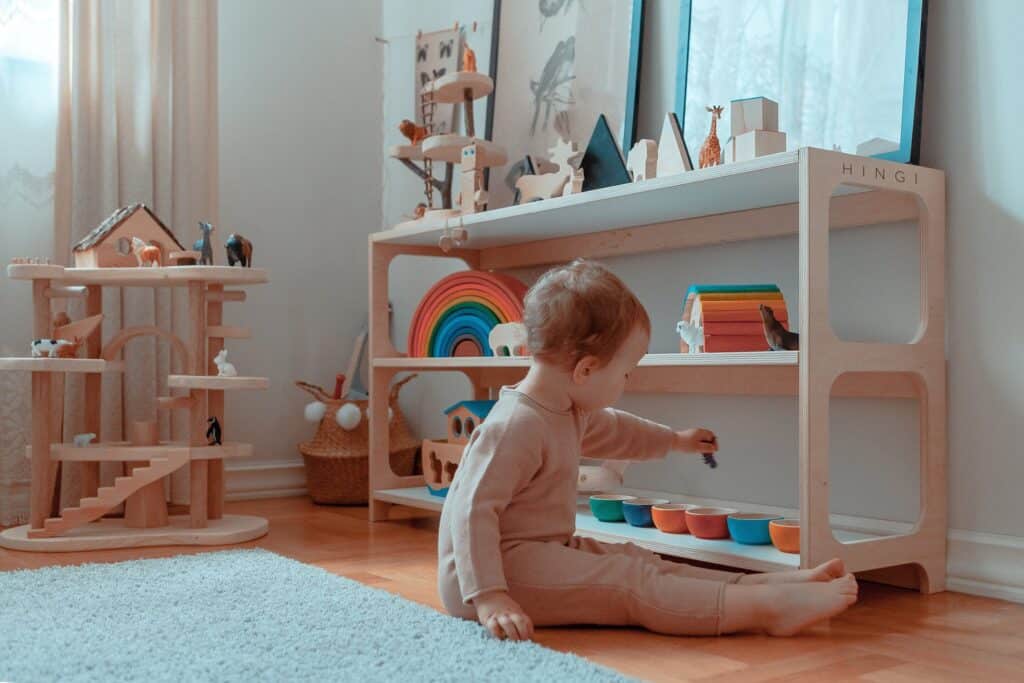
How Often Should you Rotate Montessori Toys?
The idea of shelf rotation can be complicated. Much thought goes into “how to rotate” the
If you want to keep the activities as
There is no set schedule or rule for rotation. However, endeavor to note what activity your child has mastered or is of no interest to them.
Here are some other guidelines on how to rotate your child’s
- For toddlers, displaying six to eight activities at a time is recommended. Store the rest of the activities in a basement, storage room, or wherever convenient, and rotate the stored activities when necessary.
- Observe your child and learn how they engage with
Montessori toys or activities. If you realize that an activity is too challenging for the child to complete, you can replace it with a more leisurely activity. The goal is for the child to learn independently.
- After a few weeks of watching your child, you can change some of the activities your child is not engaging with.
- Remove toys that are broken or have missing pieces from the shelves. It is not advisable to work with dysfunctional materials as this might distort the learning process.
- Do not remove any toy or activity your child is still actively interacting with, even if they have perfected it. Children derive joy and confidence from repeating actions that they have already mastered. You do not want to deprive them of that feeling of fulfillment.
Often, parents ask what they are supposed to do with the items not displayed on the shelves. Store the rest of the activities in a basement, storage room, or wherever convenient, and rotate the stored activities when necessary. You can also keep them in baskets according to their curriculum area for easy identification.
Conclusion
Setting up an accessible, well-organized


